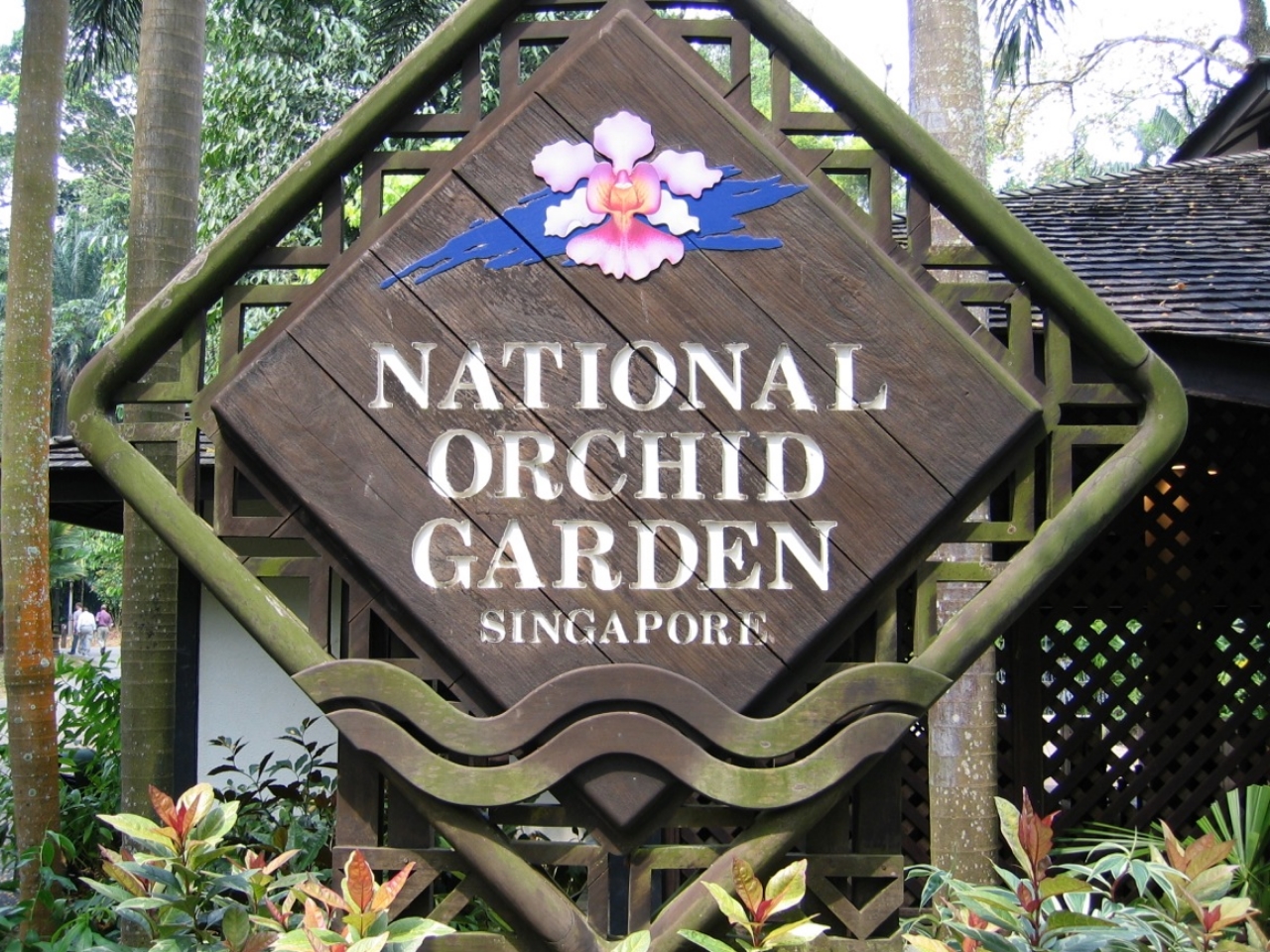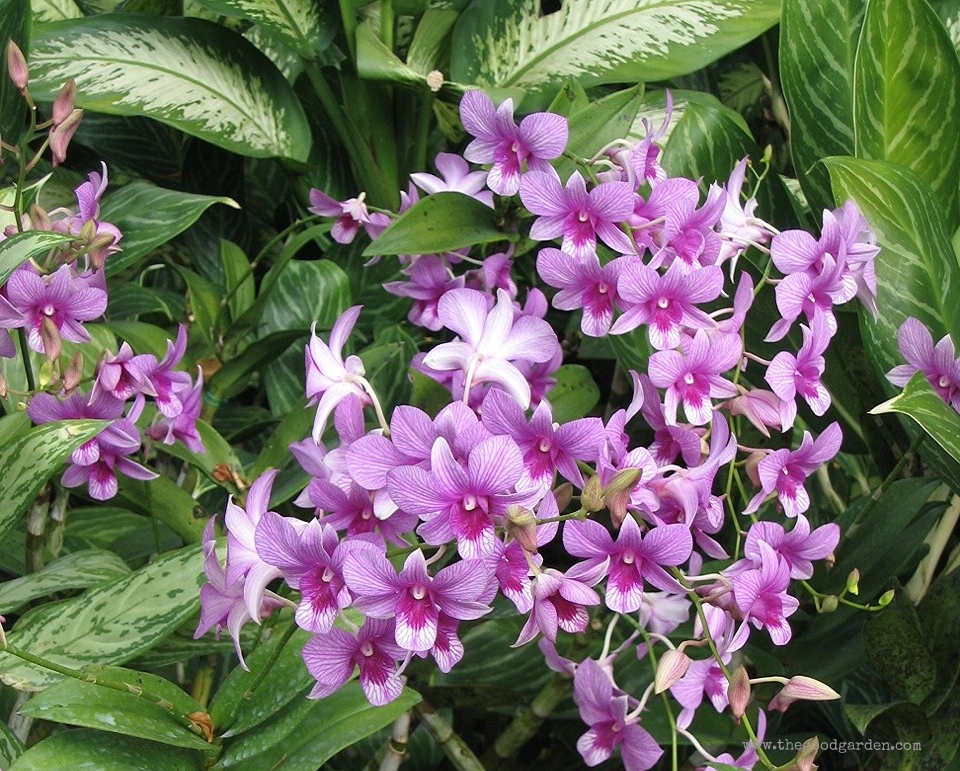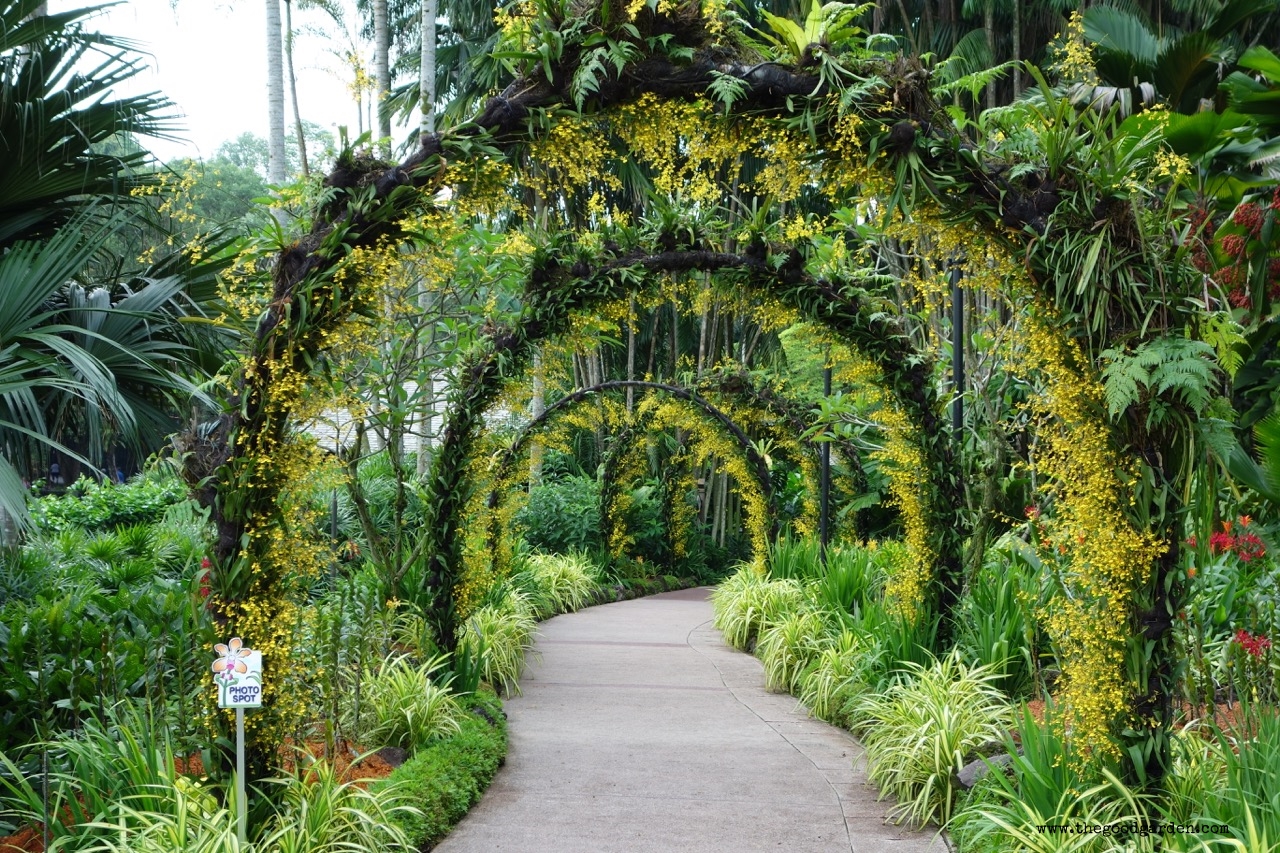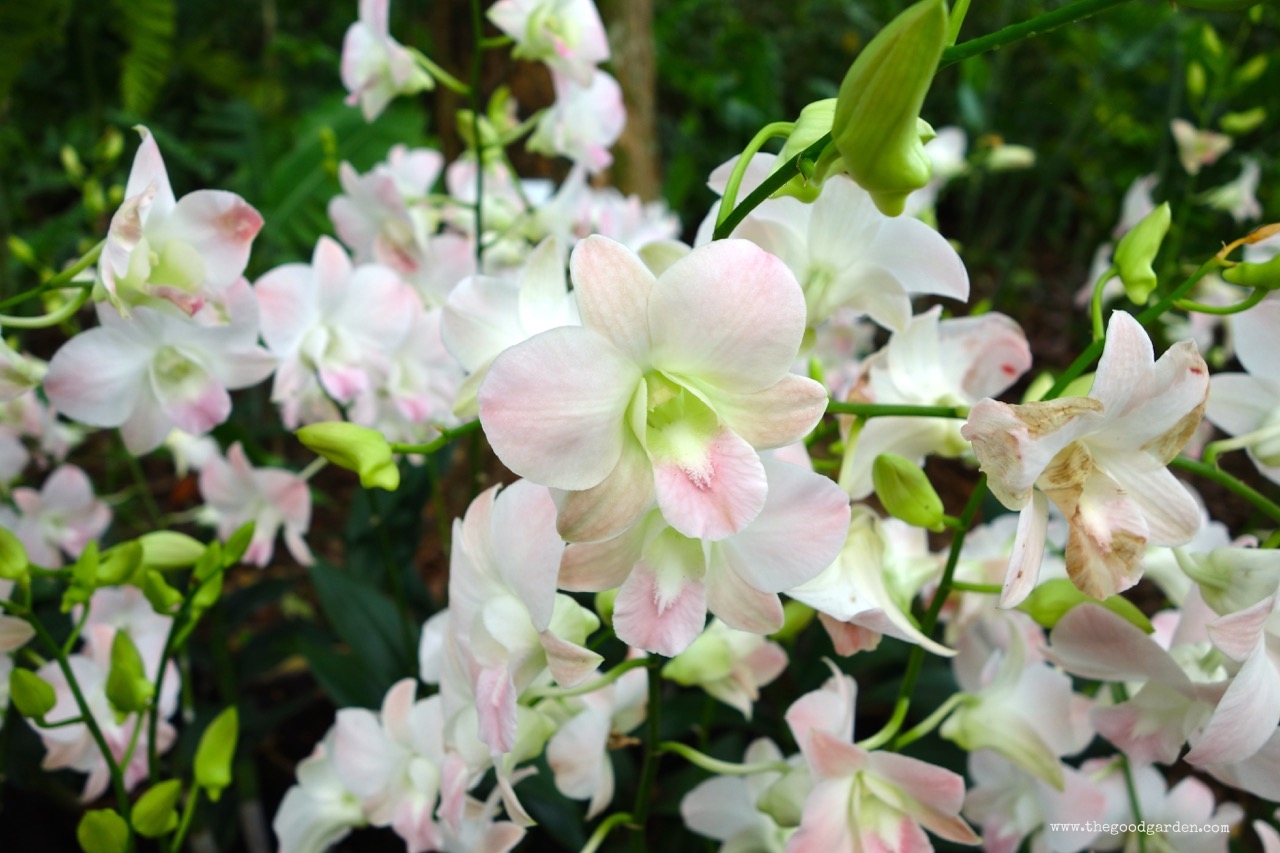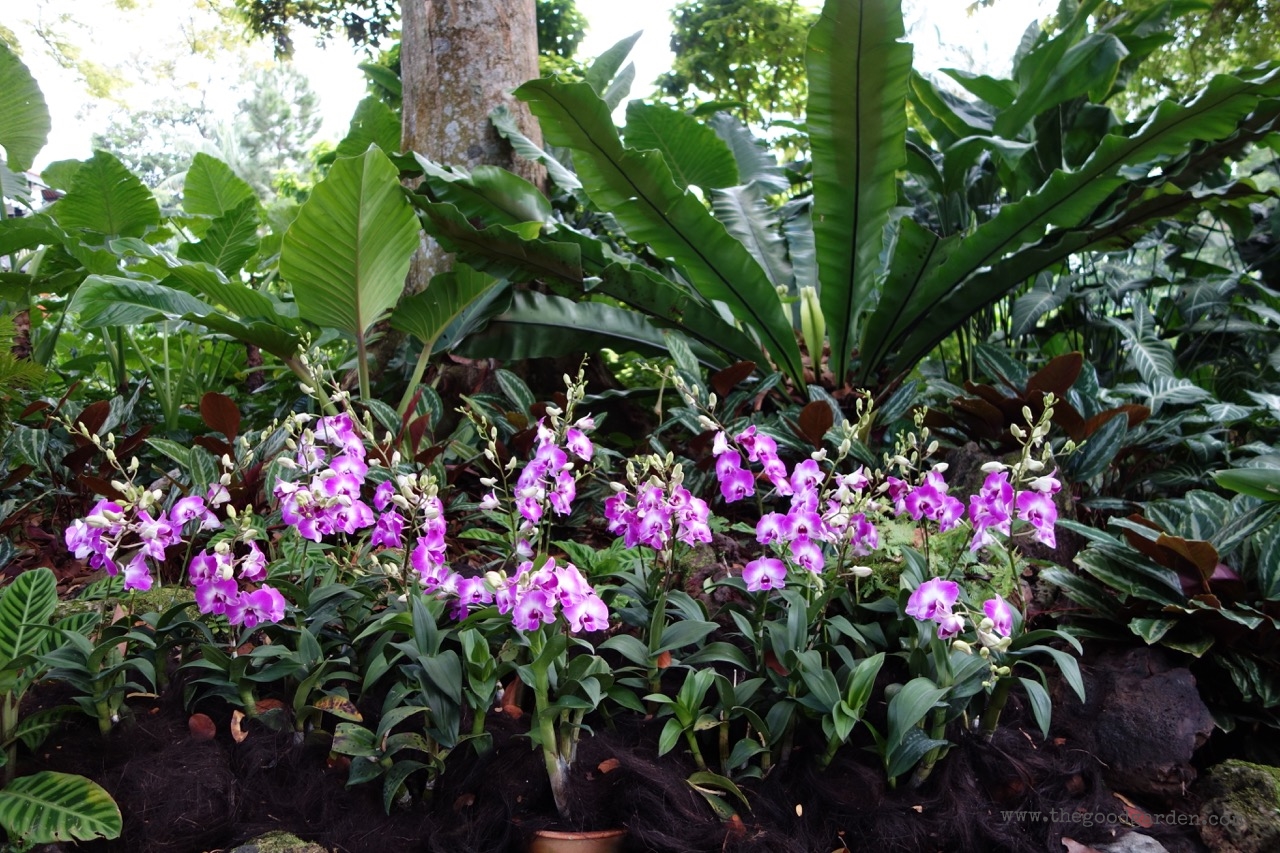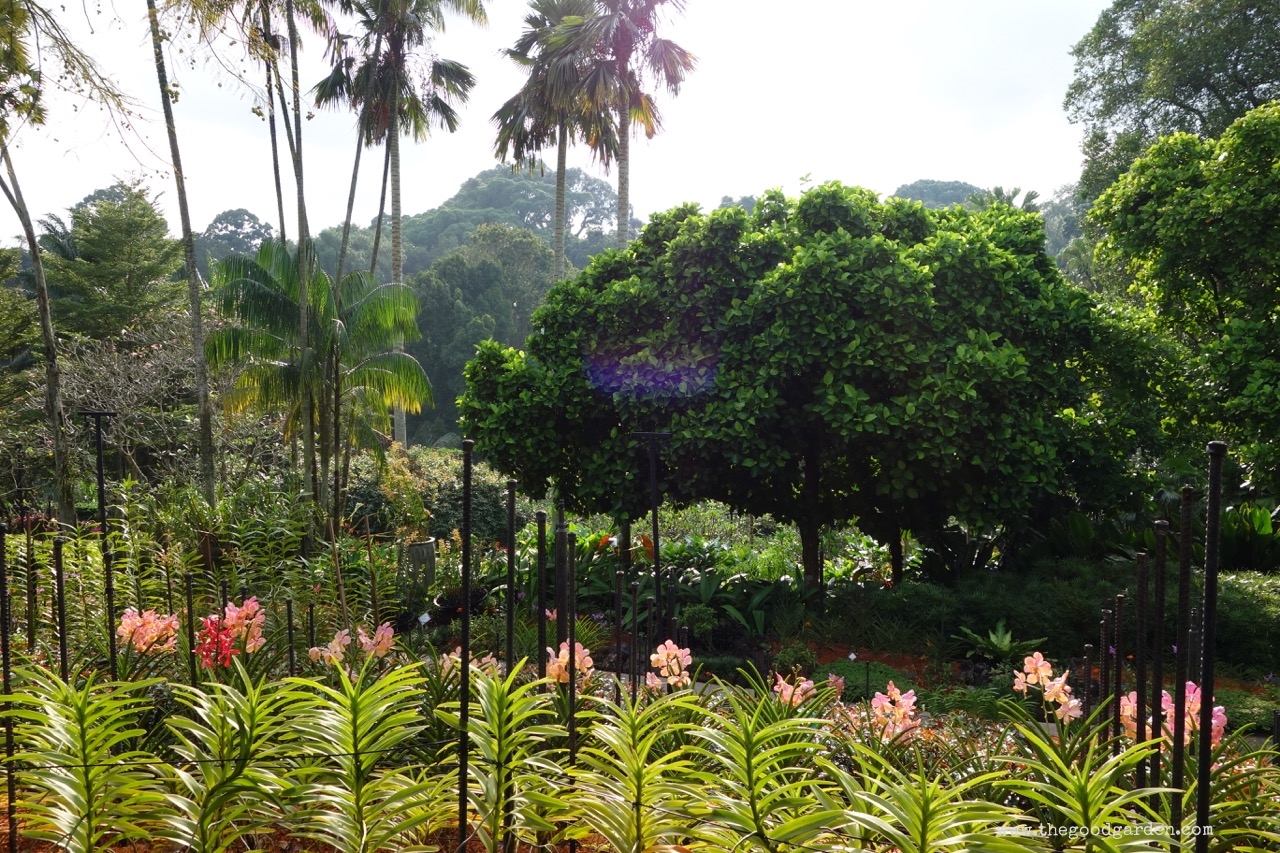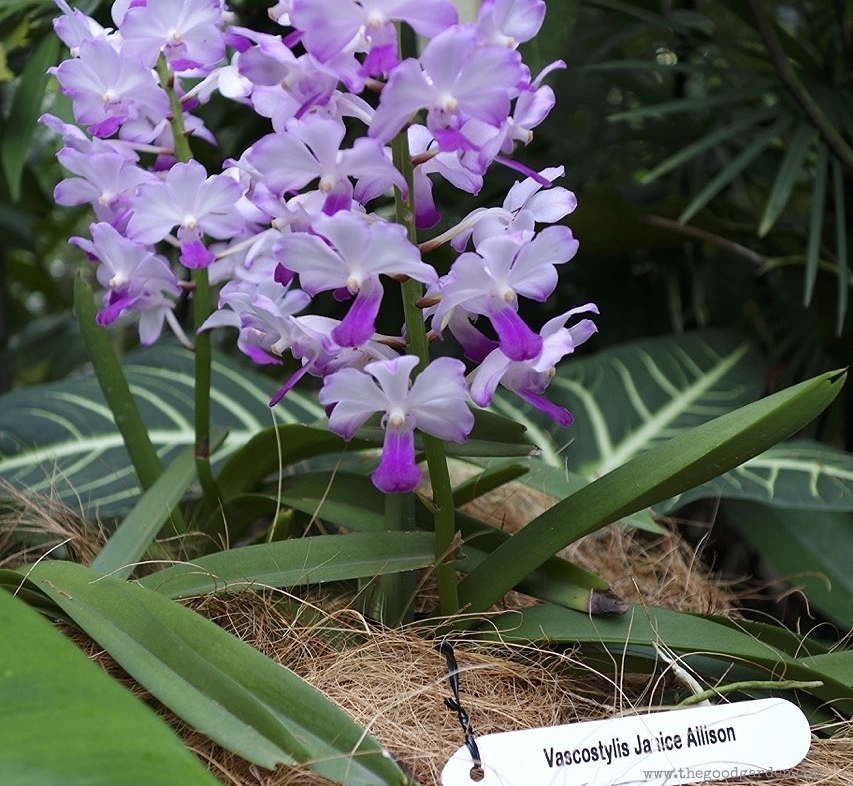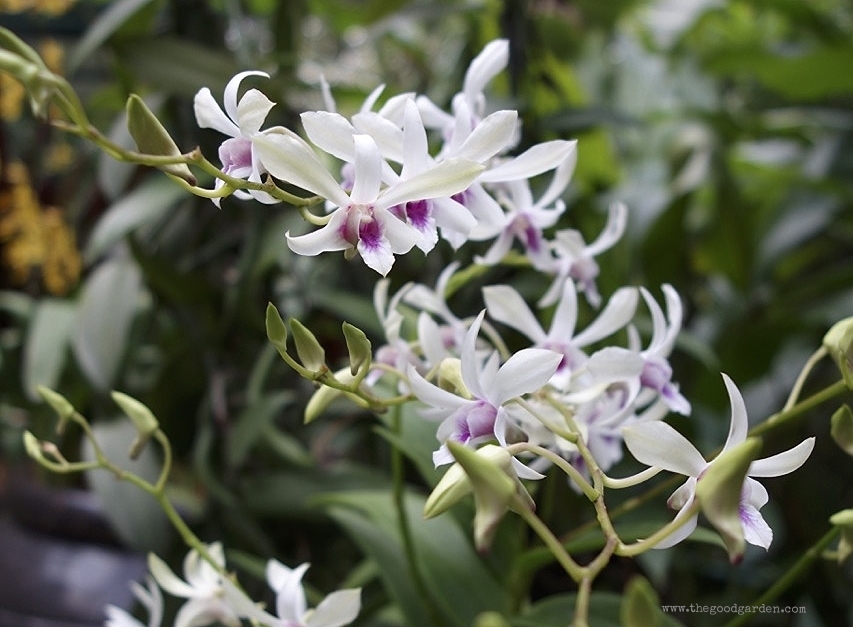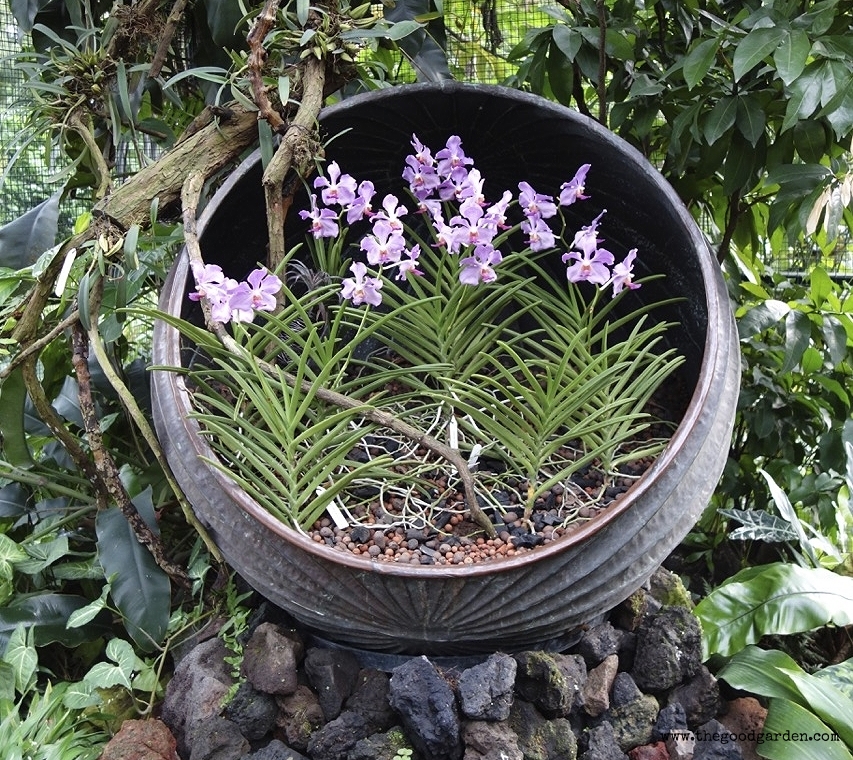I am sitting here on a snowy Wisconsin winter day appreciating the blooms on a Phalaenopsis (Moth) orchid that a friend gave me last week and a fresh shoot emerging from an Oncidium Hilo Gold orchid that my dad gave me over Thanksgiving. These amazing plants remind me of an escape I made to Singapore’s Botanic Garden. Singapore lies almost directly on the equator. As a result it has no seasons. Temperatures are almost always 80° F (28° C) and it gets 92” of rain every year. For comparison, England, the “perfect” gardening climate, averages 34” of rain and average temperatures of around 50° F (10° C).
In terms of weather, be careful what you wish for. I spent quite a bit of time in Singapore for business and learned that most people there neither have nor want a garden. It’s just too hot and humid all the time to either enjoy gardening or to sit outside for more than ten minutes. When I did break away from an air-conditioned conference room to the Botanic Garden to charge up on sunshine and warmth, I was uncomfortably drenched within 15 minutes. Humidity is regularly over 90%. I am told that your body gets used to it, and that visitors like me sweat more than locals do.
For the orchid lover, the National Orchid Garden boasts the largest display of orchids with over 600 species and has dedicated spaces for hot sun, shade, and cold. It is an embarrassment of riches with so many orchids in their prime. Looking closely, many are in individual pots covered in mulch so that when they are spent, they can be rushed back to the greenhouse for R&R, replaced by a fresh compatriot. There is never a bad time to visit this garden. The hoop pergola covered with blooming oncidiums is stunningly over the top.
As with many botanic gardens, Singapore’s is a marriage of a picturesque frame – curving paths, naturalistic lakes, clusters of trees - and the gardenesque style – where the beauty of individual plants is celebrated.
Gardenesque was advanced by John Claudius Loudon who wrote Landscape Gardening and Landscape Architecture of the Late Humphry Repton, Esq. in 1840. In it he explained, “the aim of the gardenesque is to add to the acknowledged charms of the [picturesque], all those which the sciences of gardening and botany, in their present advanced state, are capable of producing…. According to the gardenesque school, … all trees and shrubs planted are arranged… as may best display the natural form and habit of each…”
For those of us trying to grow our own orchids, check out "My first orchid reblooms: from Margaret Roach's blog Away to Garden for practical, straight-forward advice.
The American Orchid Society also has wonderful resources. Warning, orchids can be addictive.

